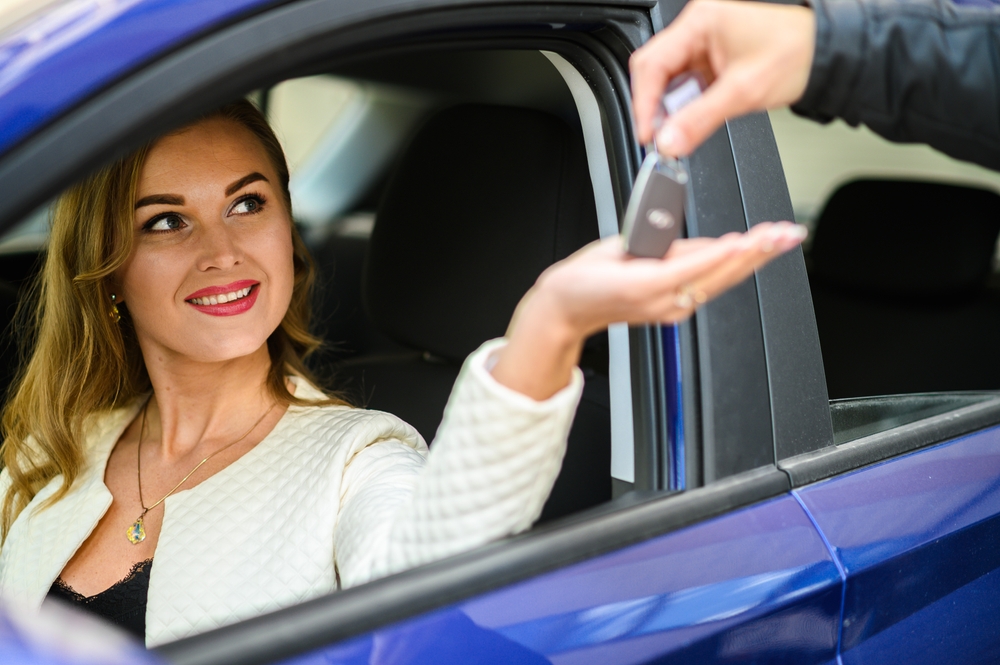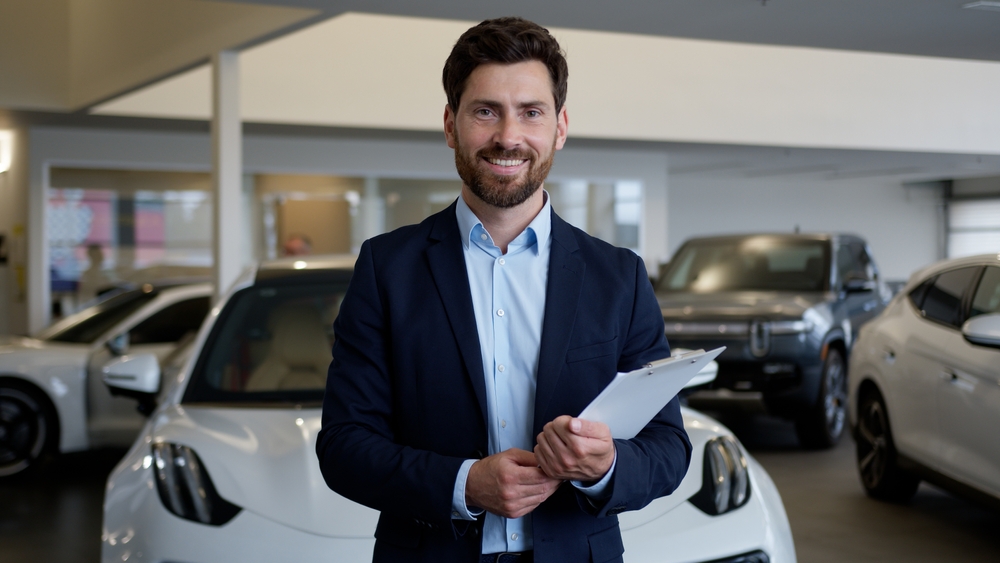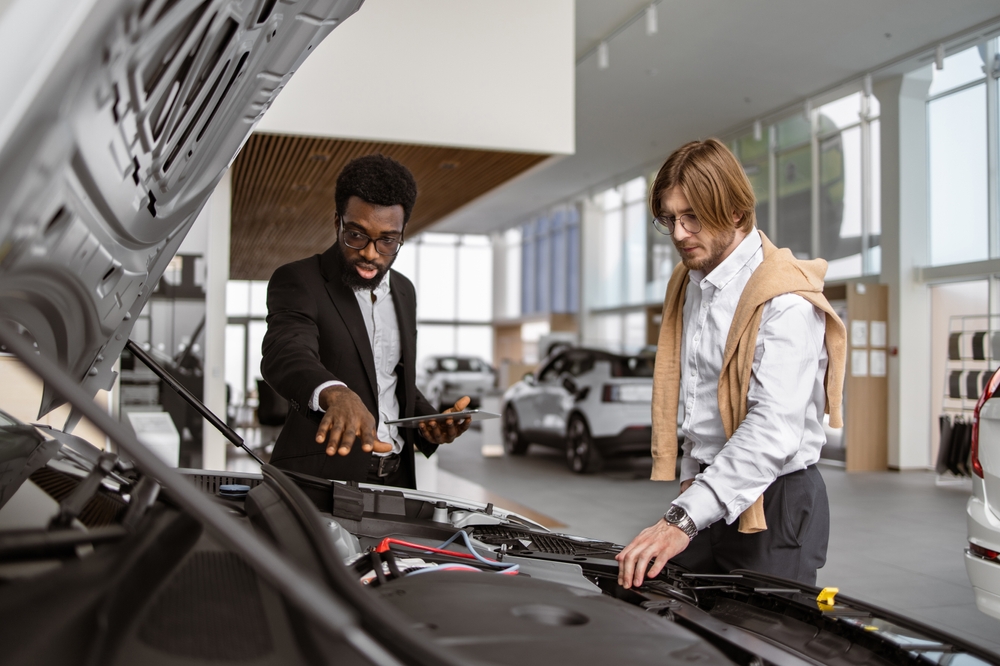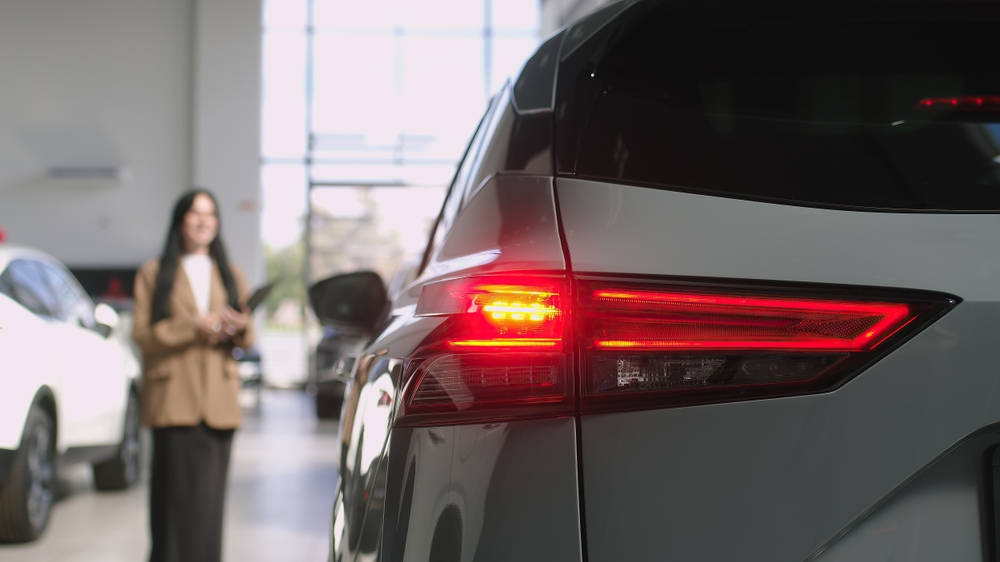
Blog

How to Plan a Successful Test Drive or Ride-and-Drive Event
A successful ride-and-drive event doesn’t just happen—it’s built on strategy, preparation, and the right people guiding every interaction. When customers get behind the wheel, they’re not just testing a car; they’re testing a brand. Professional event staff create the structure that makes that experience seamless, safe, and memorable. From route design to guest coordination and lead capture, every detail influences sales outcomes. With more than 25 years of experience managing nationwide test drive programs, Pinnacle Sales & Mail knows how to turn automotive events into measurable ROI.
Understanding What Makes a Ride-and-Drive Event Successful
At its core, a ride-and-drive event is a form of automotive experiential marketing. It moves beyond static car displays and brochures to give potential buyers what they truly want: a chance to feel the vehicle in action. Unlike a standard dealership test drive, which is often a solo experience, a well-executed ride-and-drive is a curated event. It combines the thrill of driving with a polished, professional brand experience, creating an environment where customer interest can be nurtured and converted into sales intent.
For dealerships, these events serve as powerful marketing tools to launch a new model, highlight specific features, or move existing inventory. For automotive brands, they offer a controlled setting to showcase performance, technology, and comfort to a captive audience. The goal is the same: to close the gap between curiosity and ownership by delivering an experience that is both informative and exciting. A successful event leaves attendees with a lasting positive impression of the vehicle and the brand behind it.
Turning Curiosity into Conversion Opportunities
A customer walking into a ride-and-drive event arrives with a baseline level of curiosity. The event’s job is to transform that curiosity into a genuine desire to purchase. This is where the interactive nature of the experience becomes so powerful. Reading about a vehicle’s handling, acceleration, or quiet cabin is one thing; feeling it firsthand is another. A well-planned test drive allows customers to experience the brand’s engineering promises in a real-world context.
This hands-on interaction fuels buyer intent. When a professional product specialist points out the seamless transition of a hybrid engine or the responsiveness of the steering just as the driver experiences it, the feature becomes more than a bullet point on a spec sheet. It becomes a tangible benefit. This process builds confidence in the vehicle’s capabilities and, by extension, in the brand itself. Every smooth gear shift, tight turn, and comfortable mile reinforces the purchasing decision, turning a “maybe” into a “must-have.”
Creating an Emotional Connection with the Vehicle
People rarely buy cars based on logic alone; emotion plays a massive role in the decision. A ride-and-drive event is one of the most effective ways to build a strong emotional connection between a customer and a vehicle. The experience of sitting in the driver’s seat, gripping the steering wheel, and commanding the car on an open road creates a sense of temporary ownership. It allows the customer to imagine the car in their daily life—the commute to work, the weekend road trip, the drive to school.
This connection builds trust and increases brand recall far more effectively than any digital ad or static display. A positive, memorable driving experience sticks with a customer long after the event is over. When they later see the vehicle on the road or in an advertisement, they don’t just see a car; they remember the feeling it gave them. A professionally staffed event ensures this feeling is overwhelmingly positive, guided by friendly experts in a low-pressure, high-value environment.
Step 1 — Design the Ride-and-Drive Experience Around the Customer
The foundation of any successful ride-and-drive is a deep understanding of the target audience. Before a single cone is placed or a route is mapped, you must know who you are trying to reach. Are you targeting tech-savvy early adopters for a new EV launch? Families looking for safety and space in a new SUV? Or performance enthusiasts seeking power and handling? The answers to these questions should dictate every aspect of the event design, from the cars you feature to the route you plan.
A one-size-fits-all approach will yield mediocre results. A successful event feels personalized and relevant to the attendees. This requires analyzing your target market’s demographics, lifestyle, and buying triggers. An event designed for a luxury sedan buyer should have a different tone, pace, and level of service than one designed for a rugged off-road truck enthusiast. Starting with the customer in mind ensures that the entire experience resonates with their expectations and desires, making the path to a sale that much smoother.
Match Vehicle Selection to Target Demographics
The vehicles you choose to feature are the stars of the show. Your selection should be a direct reflection of the audience you aim to attract. For instance, if you are targeting environmentally conscious urban professionals, your fleet should be heavily focused on electric vehicles (EVs) and plug-in hybrids. The event experience could then be built around themes of sustainability, technology, and urban mobility.
Conversely, if your dealership is in a rural area or a market with a high demand for utility, your ride-and-drive should showcase trucks and large SUVs. The focus would shift to demonstrating towing capacity, off-road capability, and cargo space. Presenting a lineup of compact sedans in a market dominated by truck buyers will result in a disengaged audience and wasted resources. By carefully curating the vehicle lineup to match the specific interests of your target demographic, you ensure that every test drive is relevant and compelling.
Build a Test Route That Reflects Real Ownership
The test route is the stage where your vehicles perform. A poorly planned route can undermine the entire event. A short loop around a parking lot is uninspiring and reveals little about a car’s capabilities. The ideal route should be designed to simulate the conditions of real-world ownership while highlighting the vehicle’s key strengths. It should be long enough for the driver to get comfortable and experience a range of features, typically between 5 and 15 minutes.
Safety is the top priority. The route must be scouted for potential hazards, with clear signage and, if necessary, on-site safety marshals. Consider a mix of driving scenarios: a stretch for showcasing acceleration, some curves to demonstrate handling, a section of average-speed traffic to test driver-assist features, and perhaps a rougher patch of road to highlight suspension comfort. The route should also offer good visibility for branding opportunities, allowing you to place banners or flags at key points. This transforms the drive into a mobile billboard, extending your brand’s reach to others on the road.
Step 2 — Hire the Right Test Drive Event Staff
While the cars may be the main attraction, it’s the event staff who direct the show. The quality of your staff is the single most important factor in the attendee experience and, ultimately, the event’s ROI. The right team does more than just manage logistics; they are brand storytellers, product experts, and relationship builders. They are the human connection that transforms a simple test drive into a premium brand experience.
Hiring the right staff means looking beyond generic event agencies for professionals who are specifically trained for the automotive environment. They need to be polished, articulate, and knowledgeable. A great event team operates like a pit crew, with each member knowing their role and executing it with precision. This seamless coordination creates an atmosphere of professionalism and competence that reflects directly onto your brand, building trust with every guest interaction.
Role of Professional Ride and Drive Staff in Brand Success
A professional ride-and-drive team is composed of specialists with distinct roles, all working in unison to create a flawless customer journey.
- Registration Staff: They are the first point of contact, creating a warm welcome. They efficiently check in guests, verify driver’s licenses, and manage digital waiver forms, preventing bottlenecks and starting the experience on a positive note.
- Brand Ambassadors/Greeters: These individuals manage the hospitality zone, answer general questions, and guide attendees through the event flow, ensuring everyone feels attended to.
- Product Specialists: Often riding along with the driver, these experts are the heart of the educational experience. They are trained to demonstrate key features, explain complex technology in simple terms, and answer in-depth questions. They are not salespeople; they are trusted advisors.
- Safety Marshals: Positioned along the route, they ensure a safe driving environment, manage traffic flow at key points, and communicate with the central command to keep the event running smoothly.
- Closers/Finance Liaisons: For dealership events, these individuals are trained to identify high-intent buyers and guide them toward the next step, whether that’s a trade-in appraisal, a credit application, or an introduction to a dealership sales manager.
Why Training and Communication Are Non-Negotiable
You cannot afford to have staff on-site who are learning on the job. Professional event staff from a partner like Pinnacle Sales & Mail arrive fully prepared. Our training programs are rigorous and specific to the automotive industry. Team members are educated not just on the product specs but also on the art of communication. They learn how to engage customers, how to listen for buying signals, and how to represent the brand with poise and confidence.
This training takes place in a real-world dealership environment, giving our teams practical experience long before they arrive at your event. Communication is the backbone of this system. Our on-site managers ensure constant contact between all team members, from registration to the staff on the drive route. This allows for real-time adjustments, such as managing wait times or prioritizing hot leads. This non-negotiable commitment to training and communication is what separates a chaotic event from a highly profitable one.
Step 3 — Coordinate Logistics and Safety Procedures
Operational excellence is the invisible framework that holds a successful ride-and-drive event together. Attendees should only notice a smooth, effortless experience, but behind the scenes, a tremendous amount of logistical coordination and safety planning is required. This is where a proven, experienced partner becomes invaluable. Managing the moving parts of a live driving event demands a level of expertise that goes far beyond basic event planning.
From the moment the first vehicle is prepped to the final guest’s departure, every step must be choreographed. This includes vehicle presentation, traffic flow, and, most importantly, risk management. A trustworthy event partner demonstrates their value by handling these complex details with precision, ensuring the event is not only effective but also safe and compliant. This operational backbone provides the peace of mind needed to focus on customer engagement and sales.
Vehicle Prep and Event Flow
The logistics of managing a fleet of vehicles in a live event setting are complex. A clear plan for vehicle prep and event flow is essential.
- Staging and Signage: Vehicles should be staged in an organized, visually appealing manner. Clear, professional signage is critical for directing attendees. This includes directional signs for parking, registration, the starting line, and restrooms. Well-placed branding reinforces the premium feel of the event.
- Attendee Movement: The physical layout should guide attendees on a logical path, from the welcome area and registration to the vehicle selection point, the drive route, and finally to a post-drive lounge where lead capture can occur. This prevents confusion and keeps energy levels high.
- Refueling/Charging Cadence: A detailed plan must be in place for keeping vehicles ready. For gasoline cars, this means a scheduled rotation for refueling. For EVs, it requires a robust charging infrastructure with dedicated staff to manage charging cycles, ensuring no vehicle is out of commission for long.
Compliance, Insurance, and Risk Management
Safety is the single most important aspect of any ride-and-drive event. A single incident can result in serious consequences for your brand. Professional management of compliance and risk is non-negotiable.
- Insurance and Waivers: Your event partner must ensure that adequate liability insurance is in place. All participants must sign a comprehensive digital waiver before getting behind the wheel, and staff must be diligent about verifying valid driver’s licenses.
- Route Safety: As mentioned, the drive route must be thoroughly vetted for any potential hazards. A professional partner will conduct a formal risk assessment and have contingency plans in place for everything from inclement weather to unexpected road closures.
- Staff Training: All on-site staff, especially product specialists and safety marshals, must be trained in emergency procedures. This includes knowing who to contact and what steps to take in the event of a breakdown or accident. This level of preparation, built on national experience, is a hallmark of a professional and trustworthy operation.
Step 4 — Capture and Convert Leads During the Event
A ride-and-drive event can generate incredible excitement, but that energy is worthless if it isn’t converted into actionable data. The ultimate goal of the event is to build a pipeline of qualified prospects for your sales team. This requires a systematic and seamless process for capturing lead information and a clear strategy for post-event follow-up.
This process bridges the gap between the on-site experience and the final sale. The most effective lead capture strategies are integrated directly into the event flow, making the process feel natural and unobtrusive for the attendee. The technology used should be reliable and efficient, and the staff must be trained to use it effectively. This is where operational excellence connects directly to measurable ROI, ensuring that every handshake and test drive has the potential to become a closed deal.
Integrate Lead Forms, Scanners, and Digital Capture Tools
Gone are the days of paper sign-up sheets and illegible handwriting. Modern ride-and-drive events rely on sophisticated digital tools to capture lead data quickly and accurately.
- Digital Waivers and Registration: The process often starts at registration, where attendees fill out their information on a tablet. This not only handles the legal waiver but also captures their name, email, and phone number in a clean, digital format.
- Lead Scanners and Apps: Event staff can be equipped with handheld scanners or proprietary apps on their phones or tablets. After a test drive, the product specialist can use this tool to add notes to the attendee’s profile, such as which vehicle they drove, features they liked, their purchase timeline, and whether they have a trade-in.
- CRM Integration: The best systems integrate directly with your dealership’s CRM or BDC software. This means that a lead captured at 2:00 PM on Saturday can be in your sales team’s queue and ready for follow-up by 2:01 PM. This instantaneous transfer of data eliminates manual entry errors and ensures no lead gets lost.
Turning Event Engagement into Post-Event Follow-Up
Capturing the lead is only half the battle. A well-defined follow-up strategy is essential to convert that lead into a sale. This is where a full-service partner like Pinnacle Sales & Mail provides immense value. Our expertise extends beyond the event itself into the critical post-event conversion phase.
- Immediate BDC Engagement: With leads flowing directly into the system, our BDC (Business Development Center) services can initiate follow-up while the experience is still fresh in the customer’s mind. A trained BDC agent can call to thank them for attending, answer any lingering questions, and schedule a formal appointment at the dealership.
- Targeted Direct Mail: The data gathered at the event allows for highly personalized direct mail marketing. You can send a follow-up piece featuring the exact model the customer drove, perhaps with a special offer or an invitation for a second, more in-depth test drive. This targeted approach is far more effective than generic mass mailings.
Step 5 — Measure Performance and ROI After the Event
Once the last car is parked and the tents come down, the final phase of your event begins: measuring its success. To justify the investment and optimize for the future, you must be able to quantify the event’s impact on your bottom line. Tracking performance requires a disciplined approach to data analysis, connecting the leads generated during the event to concrete sales outcomes.
This measurement process should not be an afterthought; it should be planned from the beginning. By establishing clear KPIs and using the right tracking tools, you can move beyond anecdotal feedback and produce a clear, data-driven report on your event’s ROI. This information is invaluable for proving the value of experiential marketing to stakeholders and for refining your strategy for the next event.
Track Leads, Appointments, and Sales Conversion
To calculate your true ROI, you need to track a few key metrics through the entire sales funnel. Pinnacle’s proven benchmarks provide a clear framework for this process.
- Cost Per Lead (CPL): Divide the total event cost by the number of qualified leads generated. This tells you how efficiently your event captured potential buyers.
- Appointment Set Rate: What percentage of the leads captured resulted in a scheduled appointment (e.g., for a showroom visit or second test drive)? This measures the quality of the leads and the effectiveness of the initial follow-up.
- Show Rate: Of the appointments set, how many actually showed up at the dealership? This metric helps gauge the level of commitment from the prospects.
- Sales Conversion Rate: What percentage of the attendees who completed a test drive ultimately purchased a vehicle within a set timeframe (e.g., 30, 60, or 90 days)? This is the ultimate measure of the event’s influence on sales.
- Gross Profit per Sale: By tracking the gross profit from each event-attributed sale, you can calculate the total revenue generated. When compared to the total event cost, this gives you your final ROI.
What to Adjust for Your Next Ride-and-Drive
A post-event analysis is a powerful tool for continuous improvement. After reviewing the data, you can identify what worked well and where there are opportunities for optimization. For example, did one particular vehicle have a much higher drive-to-lead conversion rate? Consider featuring it more prominently next time. Was the appointment show rate lower than expected? Perhaps the follow-up cadence needs to be adjusted.
This is where linking back to the principles of ROI becomes critical. Every adjustment should be aimed at improving the financial return. Maybe the test route was too short to effectively showcase a vehicle’s highway performance, or perhaps more product specialists were needed to reduce wait times. By treating each event as a learning opportunity, you can refine your approach over time, ensuring that each subsequent ride-and-drive is even more profitable than the last.
Real Examples of Successful Ride-and-Drive Events
The theory behind a great ride-and-drive event is powerful, but the real proof is in the results. For over two decades, Pinnacle Sales & Mail has been executing these events for dealerships and automotive brands, delivering consistent, measurable success in markets all across the country. Our model is built on taking these strategic principles and applying them with disciplined execution.
Our success stories are not accidents; they are the predictable outcome of a finely tuned system. We combine our nationwide logistical capabilities with a deep understanding of local market dynamics to create events that resonate with customers and, most importantly, sell cars. These highlights demonstrate what is possible when you partner with a team that is fully invested in your success.
From California to the Carolinas — Consistency Across Markets
A major challenge for national brands and large dealer groups is executing a consistent brand message across diverse geographical regions. An event that works in a dense urban center like Los Angeles may need a different approach in a suburban North Carolina community. Our national experience gives us the unique ability to deliver a consistently high-quality event while tailoring the details to fit the local market.
Whether it’s a multi-city EV launch tour or a coordinated sales event across a dozen dealerships in different states, our centralized training and management system ensures that every attendee receives the same polished, professional Pinnacle experience. Our logistics teams are adept at navigating the unique compliance and permitting requirements of different states, ensuring smooth, trouble-free execution everywhere. This ability to deliver quality at scale is why brands trust us to protect and elevate their reputation nationwide.
What Dealerships Learned from Partnering with Pinnacle
The feedback from our dealership partners consistently centers on the dramatic and immediate impact on their sales and lead generation pipeline. Many who were previously managing events in-house quickly realize the value of professional staffing. One general manager noted that our team was able to generate “more qualified leads in one weekend than their own team could in a month.”
The results speak for themselves. Dealerships regularly report outcomes like “tripling their new car sales” during one of our staffed event weekends. The combination of our targeted direct mail driving traffic and our on-site team converting it is a proven formula for success. With our ability to generate “100+ qualified leads per day,” we provide the sales department with a pipeline that continues to deliver value long after the event is over. This is what transforms a ride-and-drive from a marketing expense into a high-yield profit generator.
Plan Your Next Ride-and-Drive with Confidence
A successful test drive or ride-and-drive event is one of the most powerful tools in your automotive marketing arsenal. When planned and executed with professional precision, it builds emotional connections, creates brand loyalty, and drives significant sales. It requires a strategic approach that balances customer experience with logistical excellence, safety, and a relentless focus on ROI. By following these steps and partnering with an experienced team, you can move beyond simply hosting events and start engineering predictable, profitable outcomes.
Book Your Next Ride-and-Drive Staffing Team
Don’t leave the success of your most important experiential marketing events to chance. Partner with the team that has been delivering guaranteed results for over 25 years. Let Pinnacle Sales & Mail handle the planning, staffing, and logistics, so you can focus on what you do best: selling cars.
Contact us today to book a professional staffing team for your next ride-and-drive event. Schedule a consultation online or call us at 888-524-4563 to start planning.










